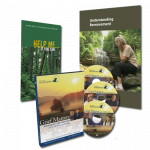Articles: Life Reorganization
Resiliency
Losing someone we care about is always a blow. But it is important to know that even when we are knocked down we don’t have to be knocked out.
One of the most neglected areas of grief support is developing what I call the “bounce back” factor, also known as “resiliency”.
Resilience is the process of adapting well to situations where we face adversity, trauma, tragedy, or threats. It is the ability to bounce back from threats or significant sources of stress, such as family and relationship problems, serious health problems, workplace and financial stressors, bereavement and life threatening situations. In simple terms, resiliency means “bouncing back” from difficult life experiences.
Life is like taking a canoe trip down a river. There are peaceful slow stretches of water we manage easily. But then we encounter rapids, turns, rocks and hazards, and that is trickier. Resiliency refers to developing the skills that enable us to navigate the rougher situations of life. Perseverance and trust in your ability to work your way around the boulders and other obstacles are important. We gain courage and insight by successfully navigating through white water. Trusted companions with you on the journey can be especially helpful when dealing with rapids, upstream currents and other difficult stretches of the river. The changes we experience on life’s river affect people differently along the way.
Resilience is normal human trait, not an extraordinary one. People commonly demonstrate resilience, such as in the face of disasters, terrorist attacks, personal or national disasters. Being resilient does not mean that a person doesn’t experience difficulty or distress. Emotional pain and sadness are common in people who have suffered major adversity or trauma in their lives, and in fact, the road to resilience is likely to involve considerable emotional distress. Resilience is not a trait that people either have or do not have. Rather, it involves behaviors, thoughts and actions that can be learned and developed.
Developing resilience is a personal journey. People do not react to traumatic or stressful life events in exactly the same way. An approach to building resilience that works for one person might not work for another. People use varying strategies. But let me suggest 10 strategies to develop resiliency:
Make connections. Good relationships with close family members, friends or others are important. Accepting help and support from those who care about you and will listen to you strengthens resilience. Some people find that being active in support programmes, faith-based organizations or other local groups can provide social support and help with reclaiming hope. Assisting others in their time of need can benefit the helper as much as the recipient.
Avoid seeing crises as insurmountable problems. You can’t change the fact that highly stressful events happen, but you can change how you interpret and respond to these events. Try looking beyond the present to how future circumstances could be a little better. Note subtle ways in which you might already feel somewhat better as you deal with difficult situations.
Accept that change is a part of living. Certain goals may no longer be attainable as a result of adverse situations. Accepting circumstances that cannot be changed can help you focus on circumstances that you can change.
Move toward your goals. Develop some realistic goals. Do something … anything … regularly that enables you to move toward your goals, even if it seems like a small accomplishment. Instead of focusing on tasks that seem unachievable, ask yourself, “What’s one thing I know I can accomplish today that helps me move in the direction I want to go?”
Take decisive actions. Act on adverse situations as much as you can. Take decisive actions, rather than detaching completely from problems and stresses and wishing they would just go away.
Look for opportunities for self-discovery. People often learn something about themselves and may find that they have grown in some respect as a result of their struggle with loss. Many people who have experienced tragedies and hardship have reported better relationships, greater sense of strength even while feeling vulnerable, increased sense of self-worth and a heightened appreciation for life.
Nurture a positive view of yourself. Resilience grows when we develop confidence in our ability to solve problems and trusting your own instincts.
Keep things in perspective. Even when facing very painful events, try to consider the stressful situation in a broader context and keep a long-term perspective. This event, however difficult is only one life event among many others that are more positive.
Maintain a hopeful outlook. An optimistic outlook enables you to expect that good things will happen in your life. Try visualizing what you want, rather than worrying about what you fear.
Take care of yourself. Pay attention to your own needs and feelings. Engage in activities that you enjoy and find relaxing. Exercise regularly. Taking care of yourself helps to keep your mind and body primed to deal with situations that require resilience.
I am not saying “Let’s all look on the bright side” of tragedy. No trauma is good. Every trauma involves suffering. There’s nothing inherently positive or indispensable about violence, disasters, death or illness. But it’s important to understand that resilience is possible. The biggest lesson may be that it’s possible to stare into the face of tragedy and somehow emerge fundamentally changed, with an ability to affect the world in previously unimaginable ways.
Oh yes, on life’s journey, you can climb out along the way to rest alongside the river, but to get to the desired destination at end of your journey, you need to get back in the canoe and carry on.










